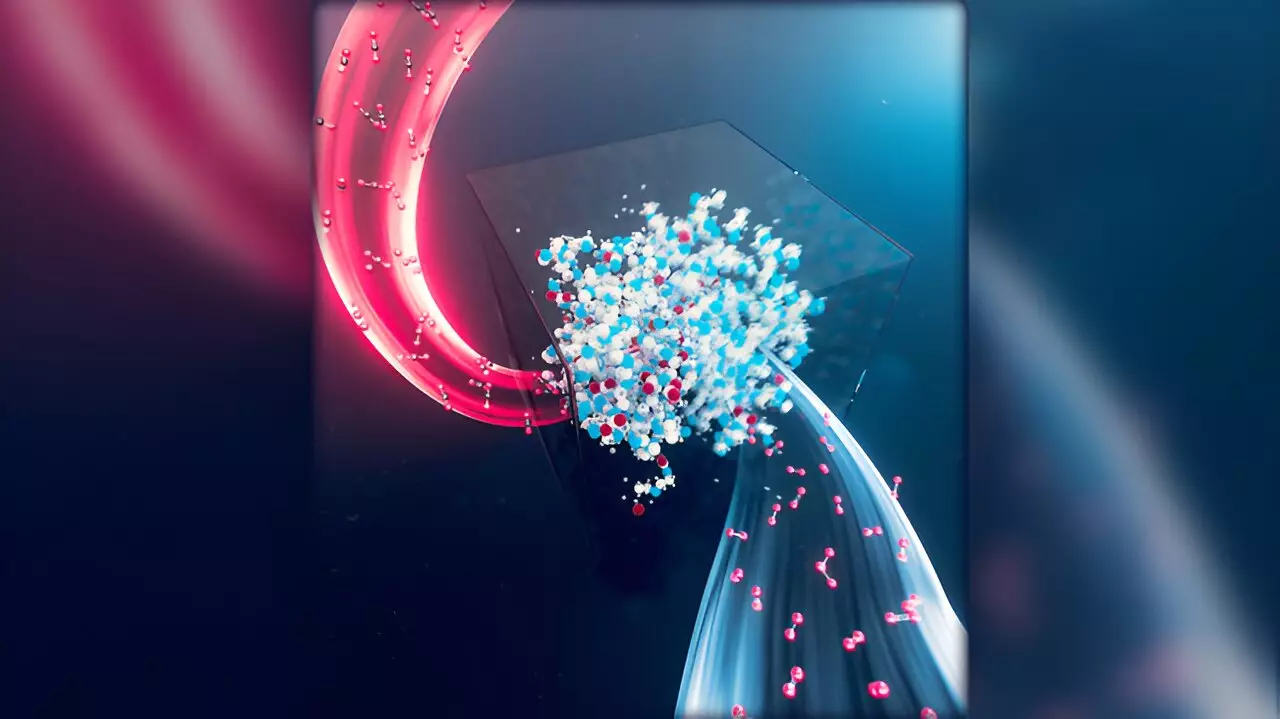Recent collaborative efforts between Lawrence Livermore National Laboratory (LLNL) and the Georgia Institute of Technology have yielded groundbreaking findings concerning the role of carbon dioxide (CO2) in the stability of amine-functionalized porous materials, crucial to direct air capture (DAC) carbon-capture technologies. Their findings, published in the prestigious Journal of the American Chemical Society, represent a significant leap forward in our understanding of how CO2 interacts with poly(ethylenimine) sorbents. This research not only addresses previously unresolved queries about CO2’s impact but also sets a framework for future advancements in DAC systems.
The importance of amine-based sorbents cannot be overstated; they remain at the forefront of carbon capture innovation due to their remarkable ability to efficiently trap CO2—even in extremely diluted atmospheres. However, achieving the long-term stability of these materials has been an ongoing challenge, predominantly due to the issue of oxidative degradation. The research team, led by principal investigator Simon Pang, sought to illuminate CO2’s intricate interactions within this process, clarifying confusing data from earlier studies.
The team’s findings reveal that CO2 does not uniformly accelerate oxidation reactions. Instead, its influence appears to be multifaceted and contingent upon various conditions—especially temperature and CO2 concentration. This insight is critical, as it unveils that CO2 can simultaneously catalyze oxidation reactions while also inhibiting polymer chain mobility, thereby decelerating radical propagation. These findings were articulated by co-investigator Sichi Li, who highlighted the dual role of CO2 in creating complex degradation profiles observed in the study.
The implications of this research extend well beyond reconciling inconsistent findings in existing literature. The study emphasizes critical variables such as polymer side-chain mobility and acidic environmental conditions, which expedite oxidative processes. By spotlighting these factors, the researchers propose novel strategies to bolster the longevity of sorbents used in DAC technology.
Potential approaches include the incorporation of functional groups, the addition of specific additives, or employing oxide supports that can actively adjust surface chemistry. These modifications aim to reduce polymer mobility and neutralize acidic conditions, thus reducing the rate at which oxidative degradation occurs. Such advancements could dramatically enhance the efficiency and cost-effectiveness of carbon capture solutions.
In summation, the collaboration between LLNL and the Georgia Institute of Technology marks a pivotal milestone in the development of carbon capture technologies. By elucidating the complex role of CO2 in the degradation of amine-based sorbents, this research opens avenues for creating next-generation materials that are not only more durable but also more efficient. As our planet confronts the escalating challenge of climate change, such innovations are crucial. This study points us towards a future where direct air capture systems could perform more effectively, providing hope in the ongoing battle against atmospheric CO2 levels. Through continued research and refinement of these materials and processes, we may yet find a scalable solution to one of the most significant environmental challenges of our time.


Leave a Reply